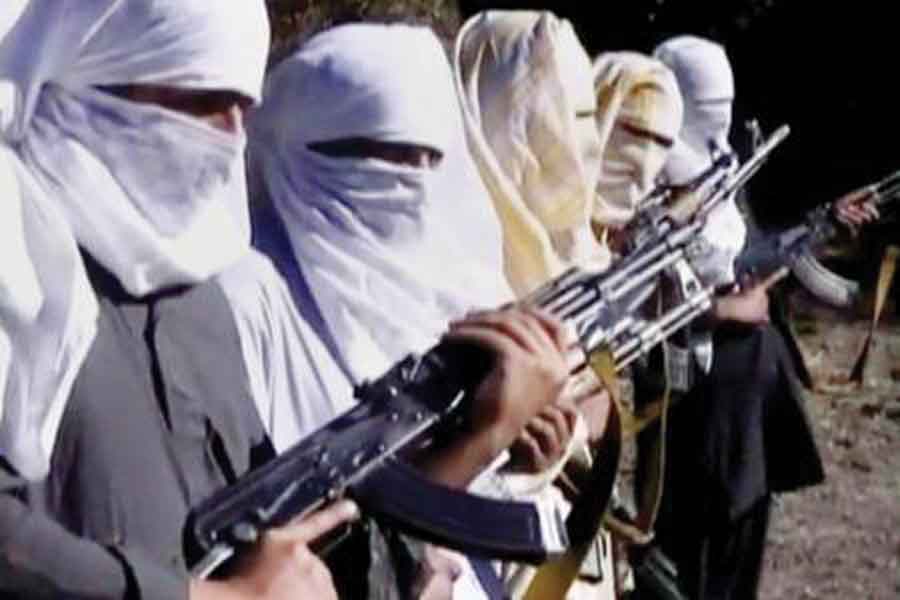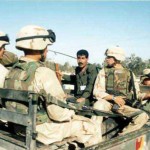Kunduz is the news having been invested by the Pakistan supported Afghan Taliban and the fighting rages on as can be expected in built up areas. The US accidentally bombed a hospital run by Medicine Sans Frontiers in the city killing 19 Afghans and wounding 20.
Kunduz is one of the largest cities in northern Afghanistan. It is of high strategic and economic value to both the government and the Taliban because it straddles an important trade route from Tajikistan.
Two days earlier a C-130 aircraft went down in Jalalabad, shot down by a shoulder fired air defence missile – probably a Stinger supplied by Pakistan or a Chinese QW-1M missile. But Kunduz was also in the news when the US invaded Afghanistan in October 2001, not only as the scene of battle but some more sinister happenings that trickled down perhaps to not many.
Pakistani forces fighting alongside the Taliban inside Afghanistan then were almost a Division strength that included 9000 Pakistan Taliban (3000 Pashtuns and 6000 Punjabis). However, because of the links that Musharraf had with the CIA, these Pakistani forces were permitted to be air evacuated into Pakistan from Kunduz and Khost in US and Pakistani aircraft. But that was not all; Pakistan managed to evacuate with them hundreds of Afghan Taliban as future investment. Hence, the Pakistani support to the Afghan Taliban and the sub-conventional clout in conjunction Haqqanis, while the much touted Operation ‘Zarb-e-Azb’ against the TTP actually let latter’s leadership slip away by giving away information of airstrikes and artillery bombings in advance each time, as reported by local Pakistani media. Little wonder that scores of such journalists have been gunned down and the Pakistani military breathes down the neck of GEO TV.
The overwhelming presence of Taliban in the Badakshan region of northern Afghanistan had been in the news for past several few months. The Taliban had encircled Kunduz past several months and made a determined attempt to take it in April but were unable to enter the city. So when the Taliban in a swift move took only a few hours for the Taliban to seize much of the northern city of Kunduz in a lightening offensive on September 26, there was stunned disbelief as to how this was achieved.
According to government sources, the Taliban cunningly “infiltrated” the city preceded by a months of buildup in the surrounding region. But at the same time, if some Afghan National Army sources are to be believed, an implosion within Kunduz was engineered with connivance of someone in the power centre in Kabul and some Taliban were actually flown into the area in US aircraft – take it with a pinch of salt in backdrop of the Great Game being played in Afghanistan. The Taliban replaced the posters of Ahmad Shah Masud, who led the anti-Taliban coalition in northern Afghanistan until he was assassinated in 2001, with its own black and white flags. The Taliban is reported to have freed at least 500 inmates from Kunduz prison, about 140 of whom were suspected insurgents.
…an implosion within Kunduz was engineered with connivance of someone in the power centre in Kabul and some Taliban were actually flown into the area in US aircraft – take it with a pinch of salt in backdrop of the Great Game being played in Afghanistan.
The Taliban investment of Kunduz marked the first time they had driven government forces out of a provincial capital since ousted from power by the US invasion in 2001. Yes, the Afghan Forces struck back backed by US Special Forces and air support and claim most of the Taliban have been routed but the situation apparently remains fluid. Casualties on both sides are unknown. The hospital ‘Doctors Without Borders’ in Kunduz was caught in the crossfire between the Taliban and government forces. Taliban had reportedly shot two doctors and according to the hospital staff the hospital had received some 296 patients including 64 children, 75 of them arrived in critical condition, many with gunshot wounds.
Kunduz is one of the largest cities in northern Afghanistan. It is of high strategic and economic value to both the government and the Taliban because it straddles an important trade route from Tajikistan. It also lies on the main road connecting Kabul to the northeastern provinces of Takhar and Badakhshan, both of which have large Taliban presence and the ANSF are handicapped with limited air transport capability to supply their troops in these regions.
According to Fawzia Kooli, first woman to be elected to Afghan Parliament after 2001, the Taliban have also taken over the Warduj district of Badakhshan, east of Kunduz province. This is a new setback for the Afghan government threatening severing of the Kabul-Tajikistan highway
Afghanistan was subcontracted to Pakistan from the very time that the US announced in 2009 that it would draw down its forces beginning 2014 when the ISAF shuts shop. That is why President Ashraf Ghani decided to tilt towards Pakistan and even broke protocol to personally call on Raheel Sharif, the Pakistani military chief, at Islamabad. However, he has suffered a rude shock especially after the August 7 truck bombing in Kabul killing 15 and wounding 400 after Afghanistan’s National Directorate of Security (NDS) stated the attacks were carried out by elements of the Pakistani army with the help of their mercenaries – Haqqani terrorist network.
The key to the Taliban surge in Afghanistan lies in Islamabad and apparently the US is giving a free hand to Pakistan.
The mention of “elements of Pakistani army” is significant and needs to be taken note of.
It was then that for the very first time the clerics in Afghanistan gathered at the scene of the bombings, burnt the Pakistani flag and gave a call for jihad against Pakistan saying, “Afghan people are Muslims and Jihad is eligible against Pakistan’s military intelligence – Inter Service Intelligence and Punjabi military; the country’s army and intelligence is directly involved in the ongoing violence and savagery in Afghanistan.” Not that it matters to the Pakistani military that controls Pakistan, defines and executes the defence and foreign policies of Pakistan and orchestrates the violence in Afghanistan.
In the recent Herat Security Dialogue held in Afghanistan in first week of October 2015, the Pakistani delegation received brickbats goalre, even being told that with 83,000 madrassas in Pakistan imparting radical training even if 10,000 were preparing suicide bombers, Pakistan could orchestrate 50 suicide bombings every day. The Pakistani response was to go on the offensive saying they were being insulted after being invited for the dialogue which was against Afghan and Pakistani norms of hospitality, besides exhorting more importantly that Pakistan was not generation any terrorism and that Pakistan was not providing any support to the Afghan Taliban. Needless to say that no one in the audience believed the Pakistanis, who were subject to host of expletives in the ensuing break.
The fact remains that violence has gone up exponentially in Afghanistan, including in Kabul. The ANSF are short of air, artillery, logistics, medical and transport, as pointed out in a Pentagon report of 2014. That is why Afghan Vice President Dostum is now seeking help from Russia. The key to the Taliban surge in Afghanistan lies in Islamabad and apparently the US is giving a free hand to Pakistan. Mullah Mansoor, the Afghan Taliban leader is the religious teacher of Haqqanis based in Pakistan and was Pakistan’s choice. But why does the US want instability increase in Afghanistan. The explanation is quite simple actually – to counter Chinese and Russian influence. That is what Obama’s extraordinary overture to Pakistan in wanting to even gift a civil-nuclear deal despite the nuclear proliferation by Pakistan and continuously generating terror. The question however remains, how long will the US and Pakistani national interests coincide especially when Pakistan is prepared to sellout to China?






Below the superficial in Afghanistan. The Drama in Kunduz. As the Students of the Quran and the Hadiths (i.e. The Taliban) gradually oust both the Pakistanis and the supplied starved Afghan National Force, the question to examine in whether they are being helped to do so by the evacuating US. If so, what could be the motive? To avert a vacuum that populous nearby China could move into turning Afghanistan into its asset and source of valuable raw materials rather than leaving Afghnaistan as festering wound that would tie down some Chinese resources for the foreseeable future.